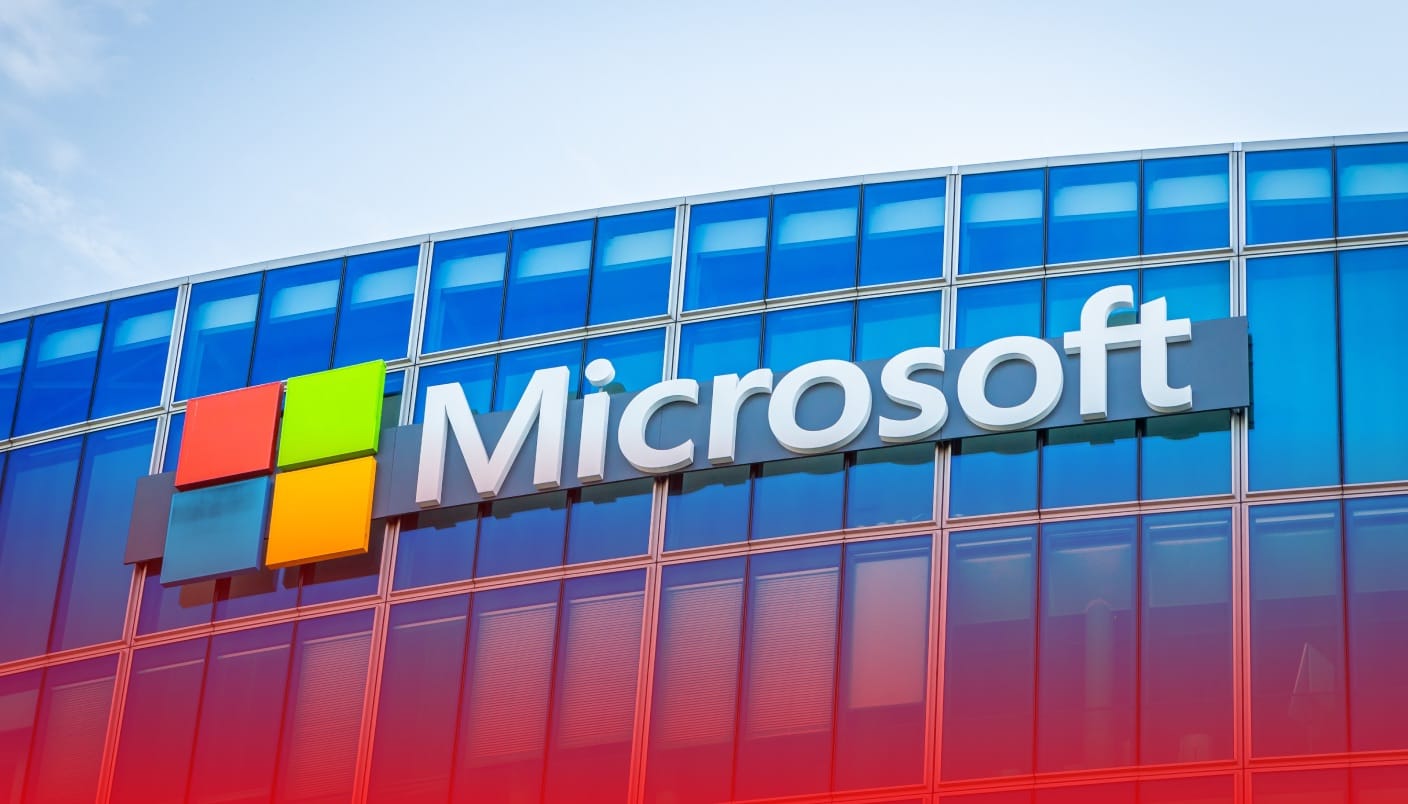Breaking News! 🚨 Top 10 brokers is here! See the most trusted trading platforms of 2024. Go now!
Microsoft’s Diversification Strategy: Investing Insights
Explore Microsoft's diversification strategy and investment insights. Assess opportunities and risks associated with Microsoft's diversified business portfolio.
2 years ago, Apr 29, 10:38 am

Microsoft, the tech titan we all know, has been up to more than just making Windows and Office. They’ve been branching out into new areas like cloud computing, gaming, and even healthcare tech. This isn’t just a whim; it’s a smart strategy to stay ahead in the ever-changing tech world. But what does all this mean for investors? Let’s take a closer look.
Microsoft’s roots are in software, but they’ve been spreading their wings lately. From Xbox gaming to their Azure cloud platform, they’re diving into new markets left and right. Plus, they’ve been scooping up companies like LinkedIn and GitHub along the way. It’s a bold move, but is it paying off financially? We’ll dig into the numbers to find out.
Investors are always on the lookout for the next big thing, and Microsoft’s diversification could be just that. But it’s not all sunshine and rainbows. There are risks involved, like regulatory hurdles and fierce competition. So, is Microsoft a safe bet for your portfolio? Let’s break it down and see what the future might hold.
Background of Microsoft
Microsoft Corporation is an American multinational technology corporation headquartered in Redmond, Washington. It develops, manufactures, licenses, supports, and sells computer software, consumer electronics, personal computers, and related services. Its best-known software products are the Microsoft Windows operating system family, the Microsoft Office suite, and the Internet Explorer and Edge web browsers. Its flagship hardware products are the Xbox video game consoles and the Microsoft Surface tablet lineup. As of June 2022, it is the world’s largest software maker by revenue.
Microsoft was founded by Bill Gates and Paul Allen in 1975. The company’s first product was an interpreter for the Altair 8800 microcomputer, which ran on the BASIC programming language. Microsoft rose to prominence in the 1980s with the release of its MS-DOS operating system for IBM personal computers. MS-DOS became the dominant operating system for PCs, and Microsoft became a major player in the computer industry.
In 1985, Microsoft released Windows, a graphical user interface (GUI) for MS-DOS. Windows eventually became the world’s most popular operating system, and Microsoft continued to release new versions of the software throughout the 1990s and 2000s. In addition to Windows, Microsoft also developed a number of other popular software products, including the Microsoft Office suite of productivity applications, the Internet Explorer web browser, and the SQL Server database management system.
n the early 2000s, Microsoft began to diversify its business beyond software. The company entered the gaming market with the release of the Xbox video game console in 2001. Microsoft also entered the cloud computing market with the launch of Azure in 2010. In recent years, Microsoft has also made investments in artificial intelligence (AI), virtual reality (VR), and augmented reality (AR).
Microsoft’s diversification strategy has been successful. The company’s gaming and cloud computing businesses are now major sources of revenue. In addition, Microsoft’s investments in AI, VR, and AR are helping the company to stay ahead of the curve in the rapidly changing technology industry.
Today, Microsoft is a global technology leader with a diversified portfolio of products and services. The company is committed to innovation and continues to develop new products and services that help people and businesses connect, create, and achieve more.
Analysis of Current Diversification Efforts
Microsoft’s traditional dominance in operating systems and productivity software, while still significant, now represents a smaller fraction of its overall enterprise. The company has proactively pursued robust diversification to maintain its position as a tech giant, with notable successes and ongoing ventures.
One of Microsoft’s most successful diversification efforts has been its expansion into cloud computing with the Azure platform. Azure has experienced massive growth in recent years, now standing as a serious competitor to Amazon’s AWS for the top spot in cloud infrastructure. This shift towards cloud-based solutions positions Microsoft favorably for the future of enterprise software and infrastructure.
Recognizing the transformative potential of artificial intelligence (AI) and machine learning (ML), Microsoft has invested heavily in these areas. Its commitment is evident in the development of AI-powered tools and services across its entire product line. From intelligent recommendations in Microsoft Office to cognitive services within Azure, AI integration is a central focus for the company.
Microsoft’s gaming sector has experienced remarkable growth and innovation. Key acquisitions like Bethesda and the pending merger with Activision Blizzard (if approved) bolster its position in the industry. The company’s focus on cloud gaming with Xbox Game Pass unlocks accessibility, and investments in technologies like virtual reality and augmented reality hint at further expansion in the gaming space.
Strategic partnerships and acquisitions have been a critical component of Microsoft’s diversification strategy. The acquisition of LinkedIn provided valuable access to professional networks and data. Similarly, the purchase of GitHub solidified Microsoft’s position in the developer community. The company’s pending acquisition of Activision Blizzard, if finalized, will bring top gaming franchises under its umbrella.
Financial Performance
Microsoft’s financial performance has been strong in recent years, driven by its diversification efforts. The company has seen significant growth in its cloud computing, gaming, and productivity businesses, while its traditional Windows and Office businesses have remained relatively stable.
Key financial metrics
- Market capitalization: $2.3 trillion (as of April 23, 2024)
- 5-year growth: +110% (from $1.1 trillion in 2019)
Revenue
- 2023: $198.2 billion (+18% from 2022)
By segment:
- Intelligent Cloud: $73.2 billion (+46% from 2022)
- More Productivity and Business Processes: $63.9 billion (+14% from 2022)
- More Personal Computing: $51.1 billion (+3% from 2022)
Key takeaways:
- Azure cloud computing revenue grew 46%, driving overall growth.
- The Productivity and Business Processes segment, which includes Office 365 and LinkedIn, saw steady 14% growth.
- The Personal Computing business remained stable, growing 3% despite supply chain challenges.
- Diversification into cloud computing, artificial intelligence, gaming, and other new areas has reduced the company’s reliance on traditional products like Windows.
- Strong financial performance allowed Microsoft to increase its dividend by 9% and buy back $60 billion of stock in 2023.
Is Microsoft Stock Worth Investing in?
Microsoft’s diversification has significant implications for individual and institutional investors alike. The company’s expansion into new areas like cloud computing, AI, and gaming reduces its reliance on traditional software markets, creating a more balanced portfolio with varying growth trajectories. This transformation impacts both long-term and short-term investment strategies and presents investors with a nuanced risk assessment picture.
For those with a long-term investment perspective, Microsoft’s diversification offers potential stability and longevity. The cloud computing sector, spearheaded by Azure, is projected to experience substantial growth. Investments in artificial intelligence promise innovation in numerous fields, fueling future opportunities. While some ventures carry more risk than established markets, Microsoft’s strong financial position allows them to take those calculated risks.
Short-term investors may see volatility stemming from the varying growth rates of Microsoft’s segments. Fluctuations within newer markets like gaming and healthcare tech can create temporary price movements in the stock. However, a long-term outlook may consider these as minor corrections as those sectors mature.
When assessing risk, investors should consider Microsoft’s market leadership position, strong brand, and continued innovation across its diverse portfolio. While competition in areas like cloud and AI is increasing, the company has built substantial competitive advantages through its established client base and robust R&D capabilities. Potential regulatory headwinds, particularly in the acquisition space, pose a future risk to consider.
Overall, Microsoft’s diversification efforts present investors with a compelling option with an evolved risk profile. Understanding individual investment goals, time horizons, and risk tolerance is essential when deciding whether Microsoft aligns with a given portfolio strategy.
Get SCTA's daily newsletter in your inbox every weekday.
You may unsubscribe at any time.
